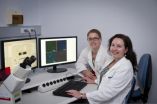(Press-News.org) Scientists with the U.S. Department of Agriculture, or USDA, and their partners have determined that water demand by many plant communities can fluctuate in response to water availability, indicating a capacity for resilience even when changing climate patterns produce periodic droughts or floods.
But their research also suggests that a limit to this resilience ultimately could threaten the survival of these plant communities. Sensitive environments such as the arid grasslands in the Southwestern U.S. already are approaching this limit.
Results from this study were published in the journal Nature by a team of Agricultural Research Service, or ARS, scientists, including three scientists affiliated with the UA. ARS is USDA's chief scientific research agency.
The study was led by UA-affiliated ARS researchers Guillermo Ponce Campos and Susan Moran and an Australian team led by Alfredo Huete from the University of Technology, Sydney.
"We found that plants have a capacity for resilience even in the face of the severe drought over the past decade," said Ponce Campos, the study's lead author. Ponce Campos led the research as part of his doctoral work at the UA and now is a research associate working with Moran.
"From grasslands to forests, plants can tolerate low precipitation, but if drought conditions continue past a certain point, this resilience will fail," said Moran, who graduated from the UA and now is a researcher with the USDA ARS Southwest Watershed Research Center and an adjunct professor in the department of soil, water and environmental science in the UA College of Agriculture and Life Sciences.
Once that limit is reached, water-starved plants lose their ability to take advantage of increased precipitation, even if the drought makes way for wetter conditions, Moran explained.
The researchers conducted their investigation using measurements made during 2000-09 at 29 sites in the United States, Puerto Rico and Australia. This provided data about precipitation patterns in the various types of environments. Globally, the 2000-09 decade ranked as the 10 warmest years of the 130-year (1880-2009) record. The team compared these data with measurements taken from 1975 to 1998 at 14 sites in North America, Central America and South America.
To calculate ecosystem water use, the scientists used satellite observations to approximate above-ground net plant productivity at each site. Then they combined these approximations with field data of precipitation and estimates of plant water loss to generate indicators of plant water use efficiency.
The team observed that ecosystem water-use efficiency increased in the driest years and decreased in the wettest years. This suggests that plant water demand fluctuated in accordance with water availability and that there is a cross-community capacity for tolerating low precipitation and responding to high precipitation during periods of warm drought.
However, the team observed that the water-use efficiency data exhibited a trend of "diminishing returns." This suggests plant communities eventually will approach a water-use efficiency threshold that will disrupt plant water use and severely limit plant production when drought is prolonged.
"Prolonged, warm drought makes a difference," Moran said. "To date, it appears there is resilience, but in the more sensitive biomes like grasslands, we are starting to see evidence of decreasing resilience. And as more and more ecosystems increase in aridity, more will reach this threshold."
The authors report that in some Australian grasslands, ecosystem resilience has decreased with the increasing aridity widely reported as a result of the prolonged warm drought over these biomes.
Moran cautioned that her team also saw the limit in some of the study areas in Utah, Arizona and New Mexico.
"We know what the resilience was in the 1980s and 1990s, and we compared it to the early 21st century," she said. "That's how we know it's decreasing. We certainly found resilience, but it is approaching the threshold."
Moran pointed out this study was only possible through the collaboration of researchers combining long-term observations at study sites across the globe to reach these conclusions, including the oldest, longest-operating range-land research facility in the world: the Santa Rita Experimental Range managed by the UA College of Agriculture and Life Sciences.
Established in 1902, the study area encompasses 52,000 acres, or about 80 square miles, on the western side of the Santa Rita Mountains south of Tucson.
"Here, scientists studying vegetation, animals and soils have documented changes in the environment as a function of land use and how weather and climate have influenced these patterns," said Mitchel McClaran, a professor in the UA's School of Natural Resources and the Environment and the range's director for research, who co-authored the study.
"Making these long-term data available to researchers across the world today is what makes studies like this possible," McClaran said. "We perform experiments and explore best management practices so they can be adopted wildlife managers, ranchers and other natural resources managers throughout the Southwest."
Work like the present study can help resource managers develop agricultural production strategies that incorporate changes in water availability linked to changing precipitation patterns.
"In the United States, much of our agricultural productivity has depended on long-term precipitation regimes. But those patterns are changing and we need information for managing the effects of those shifts," said ARS Administrator Edward Knipling. "These findings can help managers respond to the challenges of global climate change with effective strategies for maintaining agricultural productivity."
INFORMATION:
Plants adapt to drought but limits are looming, study finds
Plants can adapt their demand for water depending on how much is available - However, this resilience has a limit, and prolonged drought conditions threaten the survival of plant communities, especially in more arid areas
2013-01-23
ELSE PRESS RELEASES FROM THIS DATE:
Immune cell death defects linked to autoimmune diseases
2013-01-23
Melbourne researchers have discovered that the death of immune system cells is an important safeguard against the development of diseases such as type 1 diabetes, rheumatoid arthritis and lupus, which occur when the immune system attacks the body's own tissues.
The finding suggests that these so-called autoimmune diseases could be treated with existing medications that force long-lived immune system cells to die.
In the development of the immune system, some cells are produced that have the potential to attack the body's own tissues, causing autoimmune disease. The death ...
CSIRO telescope takes temperature of Universe
2013-01-23
Astronomers using a CSIRO radio telescope have taken the Universe's temperature, and have found that it has cooled down just the way the Big Bang theory predicts.
Using the CSIRO Australia Telescope Compact Array near Narrabri, NSW, an international team from Sweden, France, Germany and Australia has measured how warm the Universe was when it was half its current age.
"This is the most precise measurement ever made of how the Universe has cooled down during its 13.77 billion year history," said Dr Robert Braun, Chief Scientist at CSIRO Astronomy and Space Science.
Because ...
Studies provide insights into inherited causes of autism
2013-01-23
The most consistent finding of autism research lies in the revelation that the disorders are incredibly complex. Two new studies in the January 23 issue of the Cell Press journal Neuron that add to the growing appreciation of this complexity focus on identifying inherited genetic mutations linked with autism spectrum disorders. The mutations—which are distinct from the spontaneous mutations that have been the focus of previous studies—may provide valuable insights into the causes of autism.
"It's long been known that autism is a heritable condition and that some cases ...
New brain circuit sheds light on development of voluntary movements
2013-01-23
DURHAM, N.C. – All parents know the infant milestones: turning over, learning to crawl, standing, and taking that first unassisted step. Achieving each accomplishment presumably requires the formation of new connections among subsets of the billions of nerve cells in the infant's brain. But how, when and where those connections form has been a mystery.
Now researchers at Duke Medicine have begun to find answers. In a study reported Jan. 23, 2013, in the scientific journal Neuron, the research team describes the entire network of brain cells that are connected to specific ...
Whole-exome sequencing identifies inherited mutations in autism
2013-01-23
Boston, Mass. - While autism clearly runs in some families, few inherited genetic causes have been found. A major reason is that these causes are so varied that it's hard to find enough people with a given mutation to establish a clear pattern. Researchers at Boston Children's Hospital have pinpointed several inherited mutations—among the first to be identified—through an unusual approach: using whole-exome sequencing to study large Middle Eastern families with autism.
The study, published in the January 23 issue of the journal Neuron, also found evidence for some of ...
Setting the dark on fire
2013-01-23
In space, dense clouds of cosmic gas and dust are the birthplaces of new stars. In visible light, this dust is dark and obscuring, hiding the stars behind it. So much so that, when astronomer William Herschel observed one such cloud in the constellation of Scorpius in 1774, he thought it was a region empty of stars and is said to have exclaimed, "Truly there is a hole in the sky here!" [1]
In order to better understand star formation, astronomers need telescopes that can observe at longer wavelengths, such as the submillimetre range, in which the dark dust grains shine ...
Researchers design a new imaging technique for identifying the age and sex of a corpse
2013-01-23
Researchers at the University of Granada, Spain, have designed a new computing system that determines the age and sex of a corpse with a reliability of 95%. This system is based on free software called Image and a free DICOM displayer called K-Pacs. This state-of-the-art system is very different from the traditional macroscopy systems used to evaluate the osteoarticular features of a corpse, and it is much faster and user-friendly.
The author of this study is Manuel López Alcaraz, a researcher at the Forensic Anthropology Laboratory of the University of Granada, in collaboration ...
Astrocytes identified as target for new depression therapy
2013-01-23
BOSTON (January 23, 2013) — Neuroscience researchers from Tufts University have found that our star-shaped brain cells, called astrocytes, may be responsible for the rapid improvement in mood in depressed patients after acute sleep deprivation. This in vivo study, published in the current issue of Translational Psychiatry, identified how astrocytes regulate a neurotransmitter involved in sleep. The researchers report that the findings may help lead to the development of effective and fast-acting drugs to treat depression, particularly in psychiatric emergencies.
Drugs ...
Type 1 diabetes in urban children skyrockets, increasing by 70 percent in children under age 5
2013-01-23
Over the past two decades, the incidence of type 1 diabetes in very young children under age 5 has increased by 70 percent in the city of Philadelphia, according to research from a University of Pennsylvania School of Nursing researcher who currently maintains the only US registry of diabetes in children that has collected data continuously since 1985.
In a far-reaching study in the current issue of Diabetes Care, researchers led by nursing professor Terri H. Lipman, PhD, RN found that the overall incidence of Type 1 diabetes in children in Philadelphia has increased ...
Forcing choice may hamper decision-making, study finds
2013-01-23
Constraining choice isn't necessarily a good thing when it comes to managers' problem-solving, according to a new Canadian study.
Managers tend to pick higher-risk options when forced to choose between competing alternatives to complex situations, according to researchers from the University of Guelph and University of Waterloo whose study was published recently in the Journal of Business Ethics.
But when they're not forced to choose, managers tend to reflect more and solve problems with fewer negative consequences, says the study.
"One of the most powerful tools ...
LAST 30 PRESS RELEASES:
Numbers in our sights affect how we perceive space
SIMJ announces global collaborative book project in commemoration of its 75th anniversary
Air pollution exposure and birth weight
Obstructive sleep apnea risk and mental health conditions among older adults
How talking slows eye movements behind the wheel
The Ceramic Society of Japan’s Oxoate Ceramics Research Association launches new international book project
Heart-brain connection: international study reveals the role of the vagus nerve in keeping the heart young
Researchers identify Rb1 as a predictive biomarker for a new therapeutic strategy in some breast cancers
Survey reveals ethical gaps slowing AI adoption in pediatric surgery
Stimulant ADHD medications work differently than thought
AI overestimates how smart people are, according to HSE economists
HSE researchers create genome-wide map of quadruplexes
Scientists boost cell "powerhouses" to burn more calories
Automatic label checking: The missing step in making reliable medical AI
Low daily alcohol intake linked to 50% heightened mouth cancer risk in India
American Meteorological Society announces Rick Spinrad as 2026 President-Elect
Biomass-based carbon capture spotlighted in newly released global climate webinar recording
Illuminating invisible nano pollutants: advanced bioimaging tracks the full journey of emerging nanoscale contaminants in living systems
How does age affect recovery from spinal cord injury?
Novel AI tool offers prognosis for patients with head and neck cancer
Fathers’ microplastic exposure tied to their children’s metabolic problems
Research validates laboratory model for studying high-grade serous ovarian cancer
SIR 2026 delivers transformative breakthroughs in minimally invasive medicine to improve patient care
Stem Cell Reports most downloaded papers of 2025 highlight the breadth and impact of stem cell research
Oxford-led study estimates NHS spends around 3% of its primary and secondary care budget on the health impacts of heat and cold in England
A researcher’s long quest leads to a smart composite breakthrough
Urban wild bees act as “microbial sensors” of city health.
New study finds where you live affects recovery after a hip fracture
Forecasting the impact of fully automated vehicle adoption on US road traffic injuries
Alcohol-related hospitalizations from 2016 to 2022
[Press-News.org] Plants adapt to drought but limits are looming, study findsPlants can adapt their demand for water depending on how much is available - However, this resilience has a limit, and prolonged drought conditions threaten the survival of plant communities, especially in more arid areas




